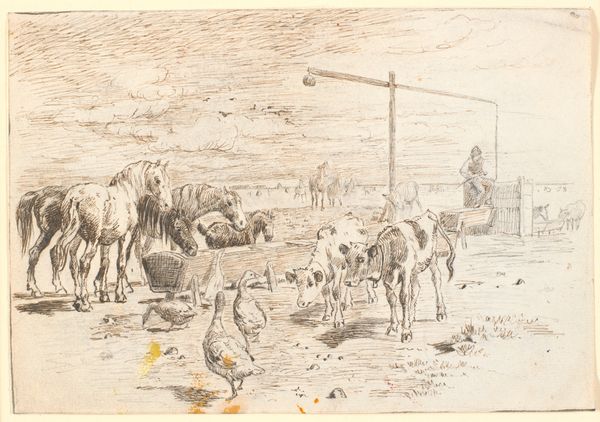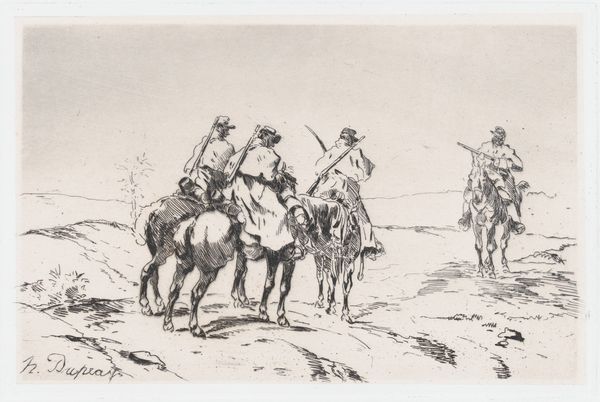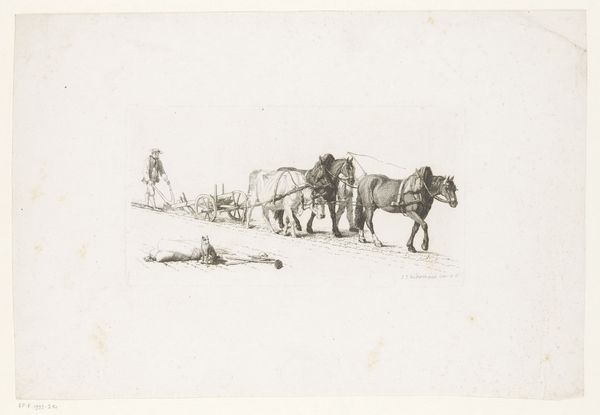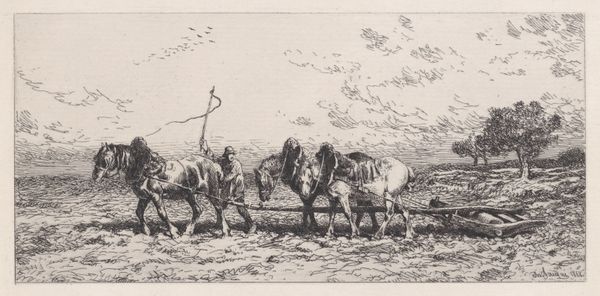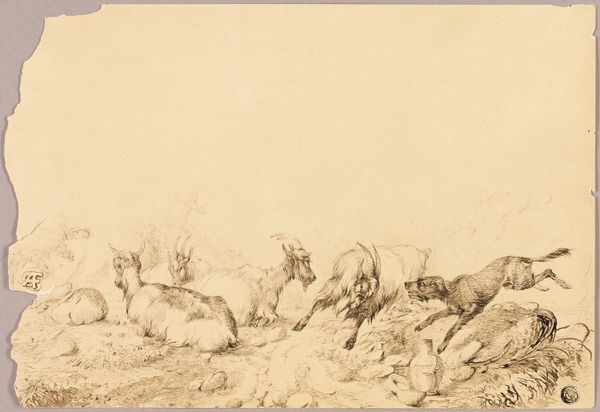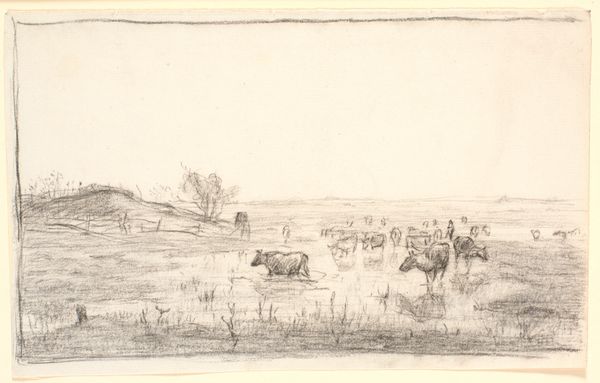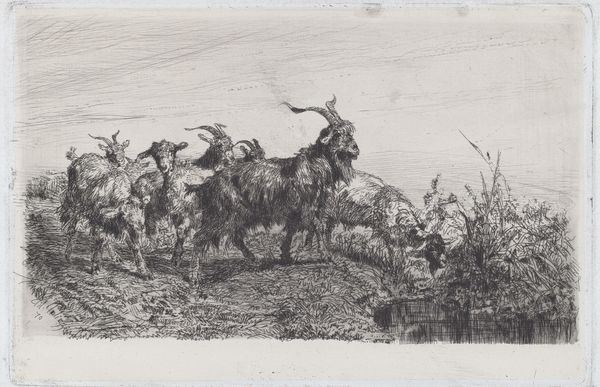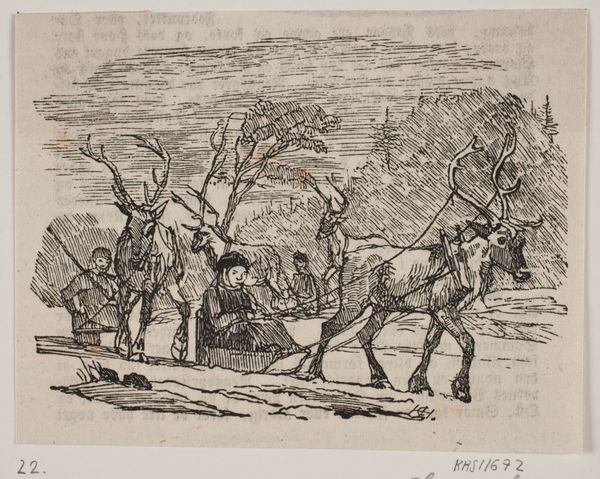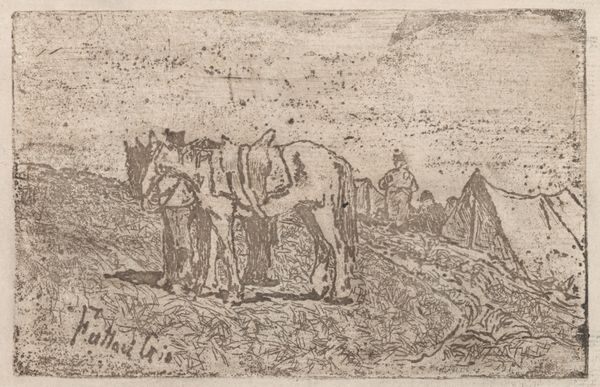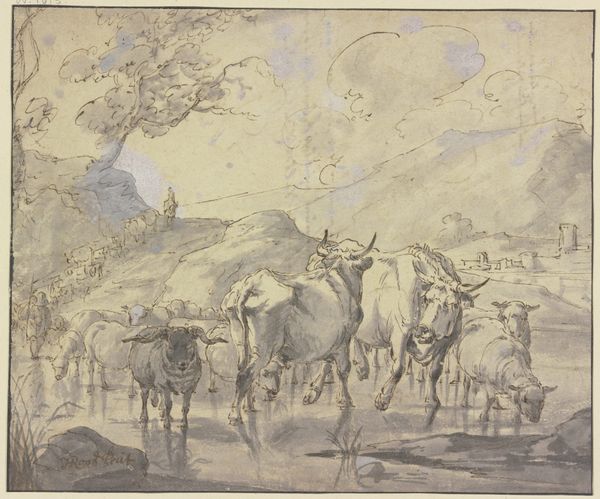
drawing, ink, pencil
#
drawing
#
landscape
#
ink
#
pencil
#
genre-painting
#
realism
Dimensions: 220 mm (height) x 342 mm (width) (bladmaal)
Theodor Philipsen made this etching, "En drift okser i den romerske campagne," using a metal plate, likely copper or zinc, to depict a herd of oxen in the Roman countryside. The etching process involves coating the plate with a waxy, acid-resistant substance, drawing the image, and then immersing it in acid, which bites into the exposed lines, creating grooves that hold ink. The effect achieved here is very linear, and the relative ease of the technique meant that printmaking played a vital role in documenting the changing social landscape of 19th-century Europe. Prints were relatively democratic, compared to unique works like paintings. The way Philipsen used the etched line conveys the scene’s energy, the cattle’s movement suggested by the varying densities and directions of the marks. Consider the labor involved, not only in the depicted cattle drive, but also in the skilled work needed to produce the printing plate. By emphasizing these materials, the making process, and its context, we can better appreciate the cultural significance of Philipsen's print. It's a great example of how the so-called fine arts are bound up with many other kinds of production.
Comments
No comments
Be the first to comment and join the conversation on the ultimate creative platform.

